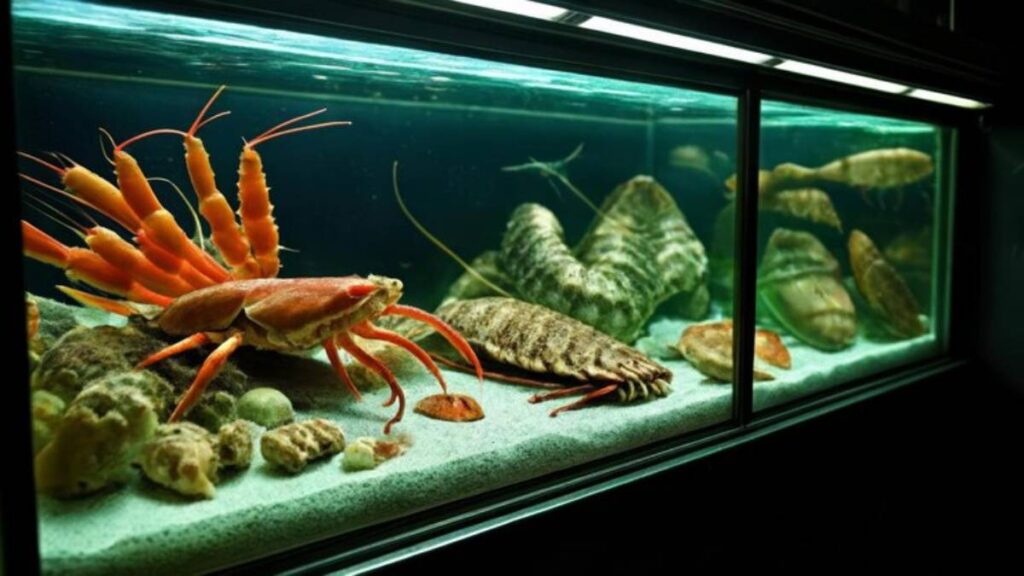The Pets Care Blog

Cost Comparison: Freshwater vs. Saltwater Tanks
Setting up your first aquarium is an exciting adventure, but it can quickly become overwhelming, especially when costs start to add up. If you’ve been torn between starting a freshwater tank or diving into a saltwater setup, understanding the true aquarium setup costs is key to making a smart, budget-friendly choice.
Whether you’re a first-time fishkeeper or someone looking to upgrade, this guide will break down the freshwater vs marine cost conundrum. You’ll get honest, in-depth comparisons of everything from equipment and livestock to maintenance and long-term ownership. With clear breakdowns and practical tips, you’ll be equipped to choose the tank that matches your vision and your wallet.
Initial Setup Costs: What You’ll Spend Upfront
| Component | Freshwater Tank | Saltwater Tank |
| Glass/acrylic tank | £60–£120 | £90–£200 |
| Stand/cabinet | £50–£100 | £80–£150 |
Freshwater tanks can often be bundled in affordable starter kits. Saltwater setups may require specialised tanks (e.g., with overflow systems), increasing the price tag.
2. Filtration System
- Freshwater: Hang-on-back filters or sponge filters (£20–£60)
- Saltwater: Sumps or canister filters + protein skimmer (£100–£250+)
Saltwater tanks need protein skimmers to manage waste in the absence of freshwater plants.
Related article: Key Equipment Differences Between Freshwater and Saltwater.
3. Lighting Systems
- Freshwater: LED lighting or T5 bulbs for plant growth (£30–£80)
- Saltwater: High-intensity reef lighting with specific spectrum (£80–£200+)
Marine aquariums with corals require more powerful lighting to sustain life.
4. Heaters and Thermometers
Both tank types need heaters (unless you live in a tropical climate):
- Average cost: £20–£50 for a quality submersible heater
- Thermometers: £5–£10
Hack: Choose a heater rated slightly higher than your tank size to maintain temperature during cold spells.
5. Water Conditioning and Salt Mix
- Freshwater: Dechlorinator or water conditioner (£5–£20)
- Saltwater: RO/DI water filtration system + marine salt mix (£40–£90 for salt; RO/DI systems from £60+)
Freshwater tanks are easier to fill from the tap with just a conditioner. Saltwater setups require extra steps and materials.
Substrate and Decor Costs
1. Substrate
- Freshwater: Gravel or sand (£10–£30 for 20-gallon tank)
- Saltwater: Live sand or aragonite sand (£20–£50)
2. Rocks, Plants, and Structures

- Freshwater: Driftwood, artificial or live plants (£20–£50 total)
- Saltwater: Live rock and reef-safe decor (£50–£150+)
Live rock in marine tanks also plays a biological role in filtration, but it comes at a price.
Anecdote: Martin once spent just £40 setting up a freshwater jungle tank with low-maintenance plants. His first saltwater aquascape? £140—and that was just the rock.
Livestock: Fish and Inhabitants
1. Cost of Fish
- Freshwater: £2–£20 per fish (many species under £10)
- Saltwater: £15–£60 per fish (rare species can go beyond £100)
2. Compatibility and Schooling
Freshwater tanks support community fish, often bought in small schools. Saltwater tanks require more careful selection due to territorial or specialised behaviour.
3. Other Inhabitants
- Freshwater: Snails, shrimp, and algae eaters (£2–£10 each)
- Saltwater: Crabs, shrimp, anemones, corals (£20+–£100+)
Related post: Top 5 Fish for First-Time Aquarists.
Hack: Marine livestock tends to be more sensitive to water parameters, so it’s crucial to invest in proper acclimation tools (drip lines, QT tanks).
Testing and Monitoring Equipment
Water Test Kits
- Freshwater: Basic kits for ammonia, nitrite, nitrate, and pH (£10–£20)
- Saltwater: Expanded kits for salinity, calcium, alkalinity, and magnesium (£40–£80)
Tools and Meters

- Digital thermometers: £10–£20
- Hydrometer/Refractometer (saltwater only): £15–£50
Long-term costs add up with saltwater due to more complex water chemistry.
Electricity and Energy Use
Power Consumption Comparison
Saltwater tanks typically use more energy because of:
- Stronger lighting systems (especially for reef tanks)
- Multiple powerheads for flow
- Protein skimmers and sumps
Estimated monthly energy cost:
- Freshwater (30 gallons): £5–£8
- Saltwater (30 gallons reef): £12–£20
Eco hack: Use timers, LED lighting, and energy-efficient heaters to reduce bills.
Monthly Maintenance and Consumables
1. Food and Supplements
- Freshwater: Basic flake or pellet food (£5–£15/month)
- Saltwater: Marine flakes, frozen food, coral supplements (£15–£40/month)
2. Water Treatments and Additives
- Freshwater: Occasionally add plant fertiliser or pH adjusters
- Saltwater: Regular doses of calcium, magnesium, trace elements
3. Replacement Parts
- Filter media
- Heater replacement (yearly)
- Bulbs or LEDs (every 1–2 years)
Long-Term Ownership and Hidden Costs
Emergency Costs
- Saltwater fish are often more delicate, increasing vet or medication costs.
- Marine tanks can crash faster during a power outage, prompting investment in backup systems.
Upgrade Itch
Saltwater hobbyists often expand:
- Adding sumps or refugiums
- Moving from fish-only to full reef tanks
These upgrades can double your initial investment.
Analogy: Owning a saltwater tank is like owning a high-performance sports car—gorgeous and thrilling, but not without its expenses.
Quick Reference: Total Cost Estimates (30-Gallon Tank)
| Category | Freshwater (£) | Saltwater (£) |
| Tank + Stand | 120 | 200 |
| Filtration & Equipment | 60 | 200 |
| Lighting | 50 | 150 |
| Substrate & Decor | 60 | 150 |
| Water Treatment | 15 | 80 |
| Livestock (initial) | 40 | 100 |
| Test Kits & Tools | 20 | 80 |
| Initial Total | £365 | £960 |
Note: Prices vary by brand, region, and online/offline sources. Always compare before purchasing.
Pros and Cons of Each Based on Cost
Freshwater Tanks
Pros:
- Low barrier to entry
- Budget-friendly upgrades
- Cheaper livestock and equipment
Cons:
- May feel limited in aesthetic variety
- Some species have shorter lifespans
Saltwater Tanks
Pros:
- Unmatched beauty and biodiversity
- Greater challenge and learning
Cons:
- High upfront and recurring costs
- Delicate ecosystem demands more time and money
Real-World Case Studies
Sam’s Starter Freshwater Tank
- Budget: £300
- Setup: 20-gallon community tank with live plants
- Monthly maintenance: ~£10
- Verdict: Relaxing and low-hassle hobby
Jess’s First Saltwater Reef

- Budget: £800
- Setup: 32-gallon reef with clownfish, soft corals, live rock
- Monthly maintenance: ~£35
- Verdict: Beautiful but requires planning and dedication
Conclusion: Choose Your Tank Based on Budget and Goals
If you’re working with a tighter budget or are new to aquarium keeping, a freshwater setup will let you explore the hobby without financial strain. It’s forgiving, fun, and surprisingly beautiful when done right.
If you have more flexibility in your budget and love marine life, a saltwater tank offers visual drama and intellectual satisfaction. Just be prepared for a steeper learning curve and a higher monthly spend.
So, which path will you choose? Drop your thoughts below, and share this guide to help other aspiring aquarists budget smartly!









